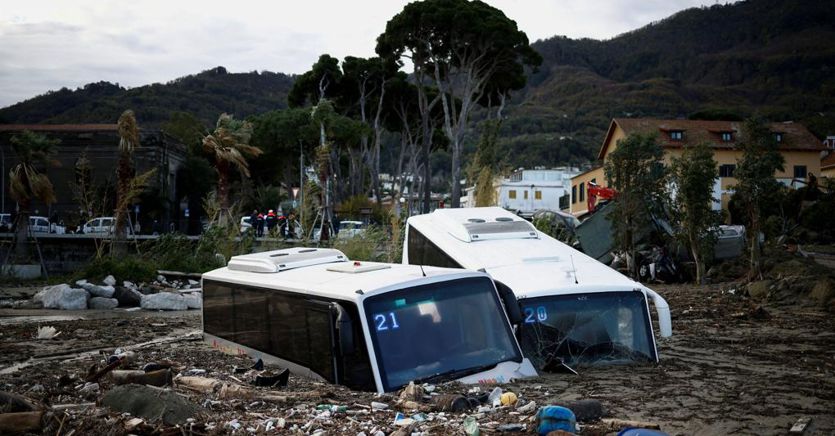The tragedy of Casamicciola, with the umpteenth landslide that has sown death and destruction, is only the latest in a long series of events that have caused hundreds of deaths in Italy in the last 70 years. Earthquakes, floods, water bombs, hydrogeological phenomena which on many occasions have brought entire cities and portions of the territory to their knees. Phenomena that are now repeating themselves months later, caused by climate change but also by the violent aggression on the territory implemented over the years with the phenomenon of illegal building which has made a large part of the country even more fragile.
From Polesine to the Florence flood
The first post-war tragedy caused by nature was that of Polesine in 1951 where 101 people died. This was followed by the massacre of the village of Molina, in the Salerno area, where 325 people lost their lives in 1954 and the flood of Florence in 1966 where dozens of deaths were counted. On 9 October 1963, a landslide detached from the mountain and fell into the basin causing a wave that overtook the Vajont dam and destroyed the town of Longarone causing 2000 victims.
The earth shakes in Irpinia, 2,914 victims
In November 1980, an earthquake in Irpinia caused 2,914 victims. And again: in 1987, in the middle of July, there were 23 deaths from a flood in Valtellina. In the 90s in Sarno one of the most dramatic disasters: On May 5, 1998 entire neighborhoods were wiped out by tons of mud, a black tide that overwhelmed houses and people descending from the mountain under the action of the rain. The dead were 161.
Soverato, Messina, Genoa
In the last twenty years there have been many tragic episodes. On September 9, 2000, after three consecutive days of rain in Calabria, the “Le Giare” campsite in Soverato suddenly turns into a raging river that overwhelms everything: 13 are killed. On October 1, 2009, hydrogeological instability and heavy rains caused gigantic debris flows in the province of Messina which overwhelmed homes and motorists between Giampilieri Superiore and Scaletta Zanclea causing 28 deaths. Two years later in Genoa, a city hit several times by floods, an exceptional rainfall in some districts on the east side of the city in Val Bisagno causes six deaths.
Earthquakes in Central Italy
On the night of 6 April 2009 a violent earthquake hit L’Aquila causing 309 deaths. One of the worst floods in the history of Liguria hits the Cinque Terre on 25 October 2011. Vernazza is invaded by a river of mud and very serious damage is also recorded in Monterosso. There are 13 victims. In Senigallia, hit last September by a flood that caused 12 victims, in 2014 there were 4 deaths. On 24 August 2016, another tragic earthquake in central Italy: in all, over three hundred people lost their lives and Amatrice was the most affected centre. On 18 January 2017, a gigantic avalanche detached from the slopes of the Gran Sasso and channeled itself into a gully in the locality of Farindola where the Rigopiano hotel was built: 29 people died. On 10 September 2017 in Livorno, the violent rains caused eight deaths. In 2018, two tragedies a few months apart caused a total of 23 deaths in Forra del Raganello, in the province of Cosenza and in the province of Palermo.
